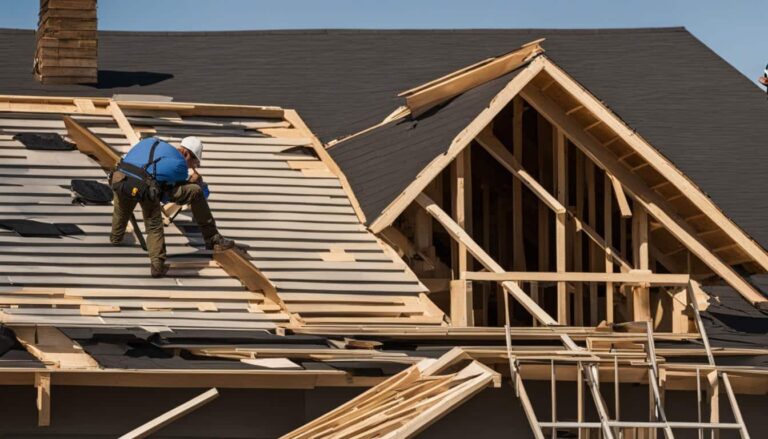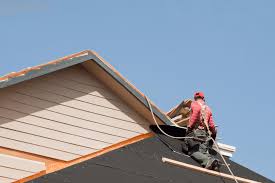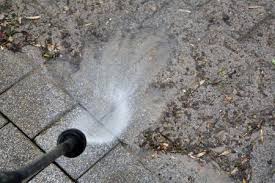How Commercial Roofing Professionals Prepare Roofs for Severe Weather?
Severe weather can take a toll on commercial roofs, causing significant damage if they are not properly prepared. We will explore how HP Storm Restoration – Roofing Company of Tampa professionals assess and reinforce roofs to ensure they withstand the impacts of extreme conditions such as heavy storms, snow, or intense winds. Their role is crucial in identifying potential vulnerabilities, making necessary repairs, and reinforcing the structure to ensure long-term durability. By examining their preparation techniques, businesses can better understand the importance of timely maintenance and how it can save them from costly repairs or replacements in the future.
Initial Roof Assessment and Inspection
A comprehensive assessment is the first step commercial roofing professionals take when preparing a roof for severe weather. Before any reinforcement or repairs are made, the roof is thoroughly inspected for damage, wear, and other vulnerabilities. This inspection typically includes checking for leaks, damaged shingles or tiles, cracks, and signs of aging in the roofing materials. Additionally, professionals examine the roof’s structural integrity, focusing on components like flashing, drainage systems, and gutters that may need repairs. Often, roofing professionals will perform these inspections before the peak of severe weather seasons, such as in late fall or early spring, to ensure the roof is in optimal condition.
The inspection also includes evaluating the roof’s slope and material durability. Roofs with improper slopes can accumulate standing water, leading to leaks and structural damage over time. Certain roofing materials are more vulnerable to specific weather conditions, such as flat roofs, which are more susceptible to pooling water during heavy rains. Based on this assessment, roofing professionals can recommend the necessary steps to address weaknesses and prevent damage during extreme weather events. A proactive inspection ensures that potential problems are addressed before they become critical during severe weather.
Reinforcing Roof Structure and Materials
Once the inspection is complete, the next step is to reinforce the roof structure and materials. Roofing professionals understand that severe weather, especially high winds, can cause materials to lift or displace. Therefore, one of the first tasks is reinforcing the roof’s structure by tightening fasteners, securing loose components, and replacing materials that may have degraded over time. For example, loose shingles, tiles, or panels can be re-secured to prevent them from being torn off by strong winds.
Additionally, experts may recommend upgrading roofing materials to those more resistant to specific weather conditions. For instance, impact-resistant shingles or more durable materials may be installed in the face of hail or heavy rain. These upgrades not only protect the roof from immediate weather threats but also increase the roof’s longevity. Roof coatings designed to reflect UV rays and prevent moisture damage may be applied to protect against both heat and water. By reinforcing the structure and enhancing the materials, professionals ensure that the roof remains resilient during storms, heavy snowfalls, and high winds.
Enhancing Drainage Systems and Gutters
Effective drainage is critical to preparing a roof for severe weather. Commercial roofing professionals often pay close attention to gutters, downspouts, and the overall drainage system to prevent water buildup, which can lead to leaks, mold, and structural damage. Roofs that lack adequate drainage can develop pooling water, which may compromise the roofing material and cause additional pressure on the roof’s structure.
Professionals will clean and clear gutters and downspouts of debris, ensuring that water can flow freely and prevent backups. In some cases, they may recommend installing additional drainage points or upgrading the existing system to accommodate larger volumes of water. For areas that experience heavy snowfall, roofing professionals may suggest installing heated gutters to prevent ice dams from forming. Ice dams occur when melted snow refreezes at the roof’s edge, preventing proper drainage and causing water to back up under the shingles. By improving the drainage system, professionals reduce the risk of water damage after severe storms or winter weather.
Read more : Cashback Credit Cards vs. Debit Cards
Strengthening Roof Flashing and Seals
Flashing is a critical component of roof integrity. It seals joints and prevents water from infiltrating areas where different roofing materials meet, such as around chimneys, vents, and skylights. During severe weather, damaged or deteriorated flashing can be weak, allowing water to leak into the building. Roofing professionals will inspect and reinforce the flashing to remain intact during extreme conditions.
This may involve replacing old flashing with more durable materials, such as metal flashing, or applying additional sealants around vulnerable areas. Sealants are also used around penetrations like pipes or HVAC systems to prevent water from seeping in during heavy rain or snow. These reinforcement measures protect against leaks, ensuring the building remains secure and dry during severe weather. Reinforced flashing and seals are particularly important for preventing water infiltration, which can lead to extensive damage if left unaddressed.
Preparing commercial roofs for severe weather requires a proactive approach. Professionals perform thorough inspections, reinforce structures, and enhance materials to ensure resilience against extreme conditions. Roofing professionals help businesses avoid costly repairs and potential damage by addressing vulnerabilities before severe weather strikes. Ongoing maintenance and post-storm inspections ensure that roofs remain secure and functional. By understanding the importance of these preparations, businesses can maintain a reliable roofing system that withstands the challenges posed by severe weather, safeguarding their property and operations in the long run.







